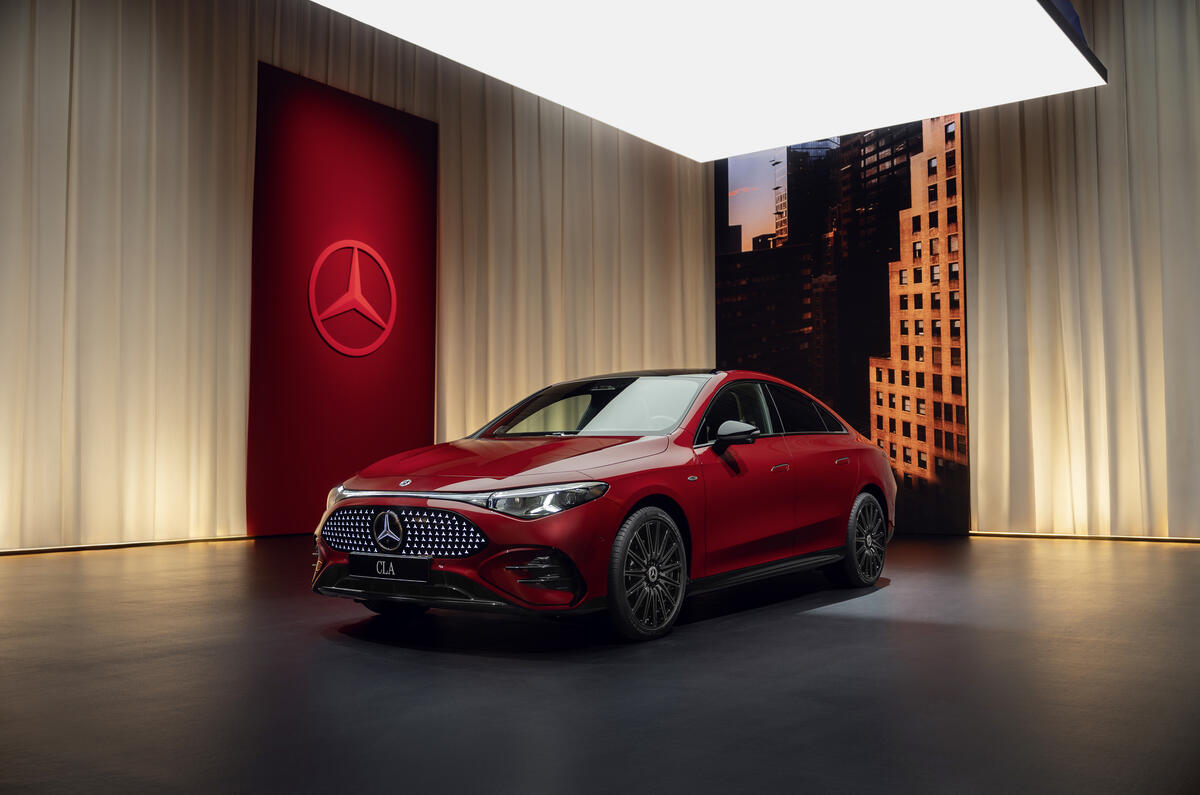The incoming electric Mercedes-Benz CLA, the German brand's game-changing EV that promises a 484-mile range, is unable to use any 400V DC charger - a common standard across the UK and Europe.
This means the third-generation CLA, based on the German firm's new MMA electric car platform, is incompatible with many older 50kW units and most Tesla Superchargers currently in operation.
This is because it lacks a DC-to-DC voltage booster, meaning it can only fast-charge at stations that supply 800 volts - typically found on newer HPC (high-power charging) networks that can charge at speeds almost double that of 400V.
The UK currently has 14,448 public charge points capable of 50kW charging or faster, according to Zap-Map. Although the data doesn't include the voltage of the chargers, Zap-Map does confirm that while 800V charging (up to 350kW) is available at some locations, it's not nearly as widespread as 400V charging (up to 250kW), given that it's a newer - and therefore much more expensive - technology.
The omission of a 400V DC converter is thought to be a cost-saving measure, the likely thinking being that the majority of customers will charge their CLA mostly at home via an AC connection –there, 400V AC flows into an onboard charger and is converted into 800V DC internally for battery use.
Mercedes confirms the charging limitation on its German website configurator with the message "charging at 400V charging stations is not possible".
Backing its decision, a spokesperson for the car maker told Autocar that "the share of 800V DC-fast-charging stations in the entire charging network is constantly increasing" adding that drivers will only be "directed to a compatible charging station" via the navigation system. "The update of available and compatible charging stations works almost in real time," it said.
Asked if there would be a paid option to fit a DC converter for the UK market, the spokesperson said: "We cannot comment on this now."
Rival car makers have taken a different approach. Hyundai and Kia equip their E-GMP-platform EVs, including the Ioniq 5 and EV6, with internal voltage boosters to allow 400V-800V conversion, enabling charging even from older DC stations.
Meanwhile, Porsche and Audi use a split-pack battery strategy with their PPE-platform EVs, such as the Macan Electric and A6 E-tron, dividing the battery into two 400V sections for charging (albeit at reduced speeds).
Mercedes has chosen not to implement either solution in the CLA EV sold in selected European markets. There is still a DC-DC converter onboard, but it's only used to supply 12V power to auxiliary systems such as seat heating and infotainment.
While 400V chargers are being replaced by 800V chargers across Europe, many 400V chargers still remain, particularly in countries such as Norway, where the EV charging infrastructure was established much earlier than in other countries.
Reports suggest the new CLA EV to be sold in Norway will be fitted with the DC-to-DC booster, but it remains unclear if this will be included on models offered in other European countries.




Join the debate
Add your comment
In Germany, detached homes usually have 400/230V 3-phase service at 63A per phase. In flats, it's 35A or 25A per phase. Very seldomly, a house or flat has 230V single phase only. So in their country, Germans can and do convert 400v to 800v in an intermediate home charging box because they have the supply side infrastructure to do so.
Really? Is Keir Starmer in charge at Mercedes? Excuse the pun. BOOM BOOM!!!!